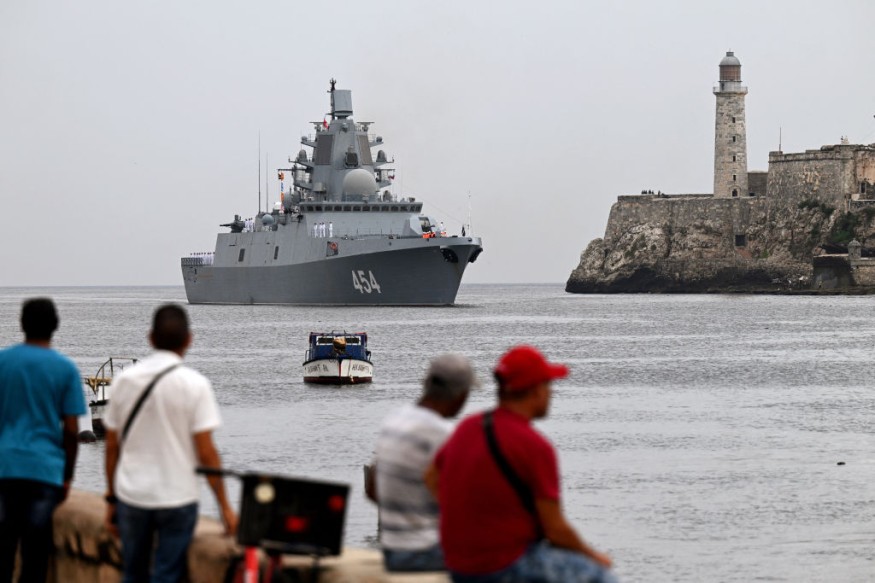Cuba: Russia Warships Reach Havana Bay in Show of Force

Four Russian naval vessels have docked in Havana Bay, Cuba, including a nuclear-powered submarine and a frigate.
This move, closely monitored by US officials, comes amid escalating tensions over Russia's conflict in Ukraine.
The fleet, just 90 miles from Florida, includes the Admiral Gorshkov frigate and the Kazan submarine, armed with advanced weapons like Zircon hypersonic missiles, BBC reports.
The Russian defense ministry confirmed missile drills in the Atlantic but assured none of the ships carry nuclear weapons.
The US Navy has shadowed the fleet with sea drones, and locals observed the ships' arrival marked by a 21-gun salute.
Russia described the visit as unofficial, allowing crews to rest and explore. Yet, its timing amid high tensions is seen as a message to the US, showcasing Russia's global power projection.
The arrival aligns with Russia's long-standing alliance with Cuba, though the island faces a severe economic crisis.
The vessels are expected to stay until June 17, underscoring Russia's influence in the region during significant global hostility.
Military Drills Underway
Heading to Cuba, Admiral Gorshkov and Kazan conducted missile drills in the Atlantic, targeting mock enemy positions over 600 km away.
Admiral Gorshkov also practiced repelling an air attack, according to Aljazeera.
These exercises showcased advanced weaponry, including Zircon hypersonic missiles, which can travel nine times the speed of sound and hit targets over 1,000 km away.
The Kazan submarine, part of Russia's new generation of vessels, also carries advanced missiles.
Cuba's foreign ministry emphasized that the Russian ships carry no nuclear weapons and framed the visit as standard naval practice.
US officials echoed this sentiment, stating they do not see the visit as a threat but will continue monitoring the situation.
The presence of Russia warships in Cuba symbolizes strong support for the Cuban government and its ally, Venezuela.
The vessels may head to Venezuela next, showcasing Russia's strategic reach.
This visit highlights the deepening ties between Moscow and Havana amid ongoing global conflicts. It serves as a reminder of Russia's ability to project regional power.
Historical Context
The history of Russian-Cuban relations dates to the Cold War, highlighted by the 1962 Cuban Missile Crisis, which nearly led to nuclear war.
While less dramatic, the visit still carries echoes of that tense period.
Cuba is experiencing its worst economic crisis in decades, with severe shortages and public discontent.
Russia has provided economic support, including delivering 90,000 metric tons of oil.
Cuban President Miguel Diaz-Canel's recent visit to Moscow and his expressions of solidarity with Russia underscore their strengthening alliance, Reuters noted.
US military assets, including the USS Truxtun, USS Donald Cook, and the P-8 Poseidon reconnaissance plane, are monitoring the Russian vessels, emphasizing routine maritime defense.
The arrival of Russia warships in the Caribbean has broader regional implications, especially in the context of Russia's war in Ukraine.
While Cuba insists the visit is routine, the US remains vigilant against potential threats.
This article is owned by Latin Post.
Written by: Ross Key
WATCH: Russian warships arrive in Cuba in show of force - From BBC News
Subscribe to Latin Post!
Sign up for our free newsletter for the Latest coverage!
















